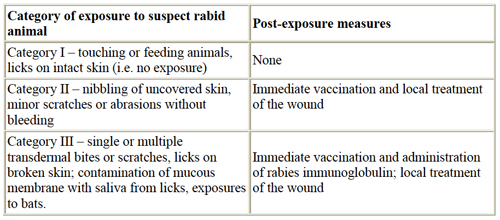 |
(http://rabiesalliance.org/rabies
/what-is-rabies-and-frequently
-asked-questions/)
|
 |
| Category III Exposure
(http://www.siouxfalls.org/police/
uniformed/support-services/animal-control
/animal-bites.aspx)
|
 |
| Category II Exposure (http://www.wormsandgermsblog.com/tags/bats/) |
 |
| Table recognizing the different categories of exposure to rabies and the correlating post-exposure measures. (http://crudem.org/rabies-in-haiti/) |
No comments:
Post a Comment